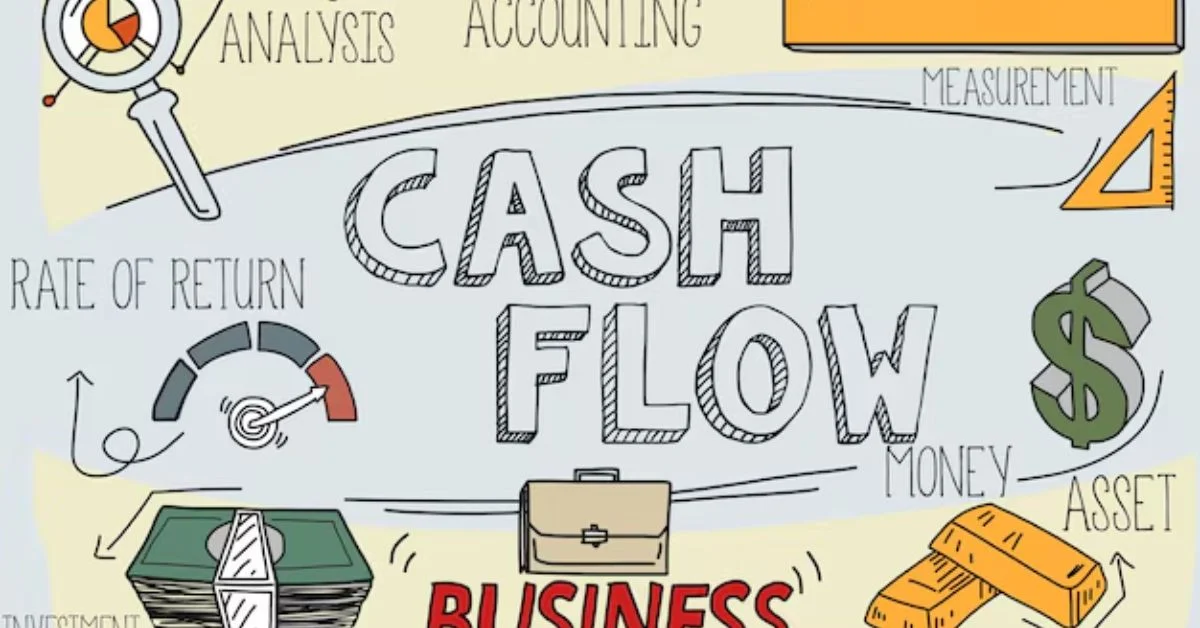Every business owner has asked themselves at least once: How do I manage cash flow? What should I pay attention to? Am I missing something in my statements? Don’t worry – you’re not alone. Today, we’re here to explain everything you need to know about cash flow and how it works. So, sit back and relax as we start from the very beginning!
Distinguish Between Profit and Cash Flow
First things first, you must understand the difference between profit and cash flow.
Profit is the money left over after you subtract all your expenses from your revenue. It’s what you earn after paying for costs like materials, salaries, and rent. Profit shows if your business is making money overall.
Cash flow, on the other hand, is the movement of money in and out of your business over a specific time. It includes all the cash you receive and all the cash you pay out.
To distinguish between them, think of profit as your business’s financial health over the long term, while cash flow is what keeps your business running day-to-day. For example, if you make a large sale, it might show as profit, but if the customer delays payment, your cash flow can still suffer.
Analyze Cash Inflows and Outflows
Dave Heistein, Profitwise Accounting, rightly states: “Business growth starts with close cash flow monitoring and adaptable strategies.” This is precisely why inflow and outflow analysis on time is so important.
By analyzing cash inflows, you can see where your revenue is coming from and if it’s growing. Knowing the sources of your income helps you identify which products or services bring in the most money.
On the other hand, analyzing cash outflows lets you monitor your spending. By examining where your money goes, you can find areas where costs might be too high so you can cut expenses. This helps in planning for future costs and avoiding financial surprises.
Track Operating, Investing, and Financing Cash Flows
Operating cash flow covers your business’s day-to-day activities. To track it, look at all the cash coming in from sales and all the cash going out to pay for expenses like rent, wages, and supplies. This shows if your business generates enough cash from its core activities to stay afloat.
Investing cash flow includes money spent on assets that help your business grow, like equipment or property. Look at any cash spent on purchasing assets or cash received from selling them. This way, you’ll see how much you are investing back into your business.
Financing cash flow comes from transactions related to funding your business, such as loans or investors’ capital. Tracking this involves noting any cash received from loans or investments and cash paid to repay debts or pay out dividends. This helps you see how much of your cash flow relies on external funding.
Forecast Future Cash Flow Needs
To forecast your future cash flow, look at your past trends. Identify times when cash was low or high, as this can show patterns. For example, if sales are lower in certain months, you can plan for those slow periods.
Estimate your future inflows by looking at expected sales, customer payments, and any other income sources. Be realistic in your estimates to avoid cash flow gaps.
Next, calculate your future expenses, including both fixed costs, like rent and payroll, and variable costs, like supplies and utilities. This helps you see if you’ll have enough cash to cover all your costs.
Also, consider any one-time expenses, such as equipment purchases or repairs, and include these in your forecast. If you see a cash shortage coming, you can arrange funding in advance or adjust spending.
Manage Accounts Receivable and Payable
Accounts receivable is the money owed to you by customers. To manage it well, set clear payment terms, like requiring payment within 30 days.
Send invoices promptly and follow up if payments are late. This helps you receive cash faster and avoid delays in your income.
Accounts payable, on the other hand, is the money you owe to suppliers or vendors.
Good management here means paying bills on time to avoid late fees but not too early, so you keep more cash in hand. You can also negotiate with suppliers for better payment terms, like extended deadlines or discounts for early payments.
By balancing accounts receivable and payable, you will ensure that more cash flows in than out. Tracking both helps you spot any issues quickly, like customers who often pay late or bills that are piling up.
Build a Cash Reserve
A cash reserve is like a savings account for your business. It’s money set aside to cover unexpected expenses or slow periods. If sales drop or expenses suddenly rise, you have funds to keep your business running smoothly.
To build this reserve, start by setting a target amount. A good rule of thumb is to save enough to cover at least three months of expenses.
To fund your reserve, set aside a small amount from your profits each month – as much as you can afford.
If you receive a large payment or a period of high sales, consider putting extra money into your reserve. This way, your reserve will grow faster without impacting your daily operations.
And these are the basics of cash flow management! Always remember – the most important thing is to be proactive and well-prepared. However, if you’re ever unsure or face an unexpected challenge, it’s a good idea to consult an accounting expert. We wish you all the success in managing your financials now and in the future!
For more information,click here.









